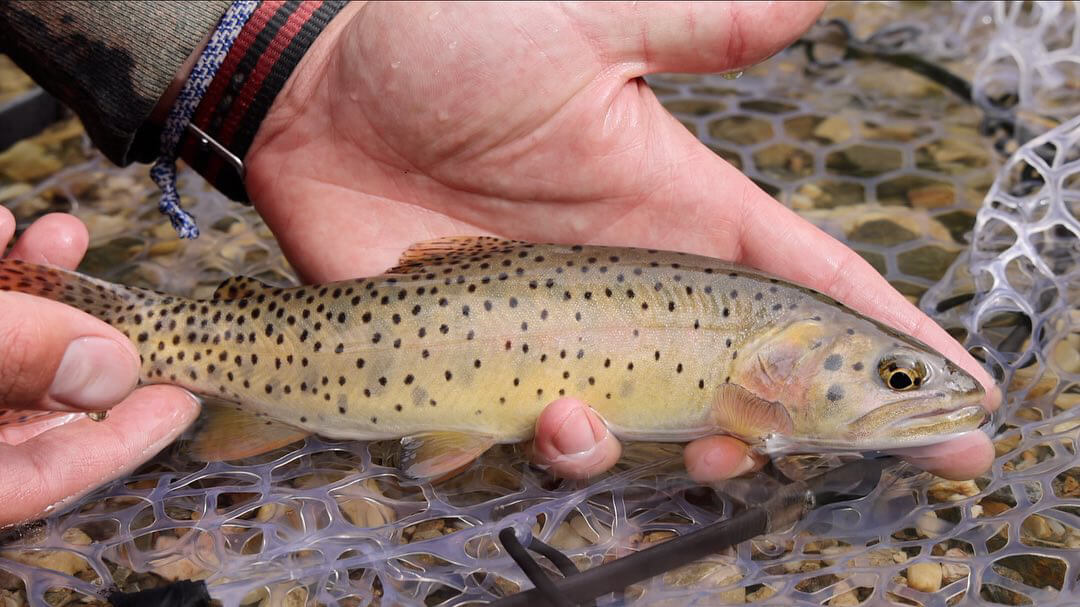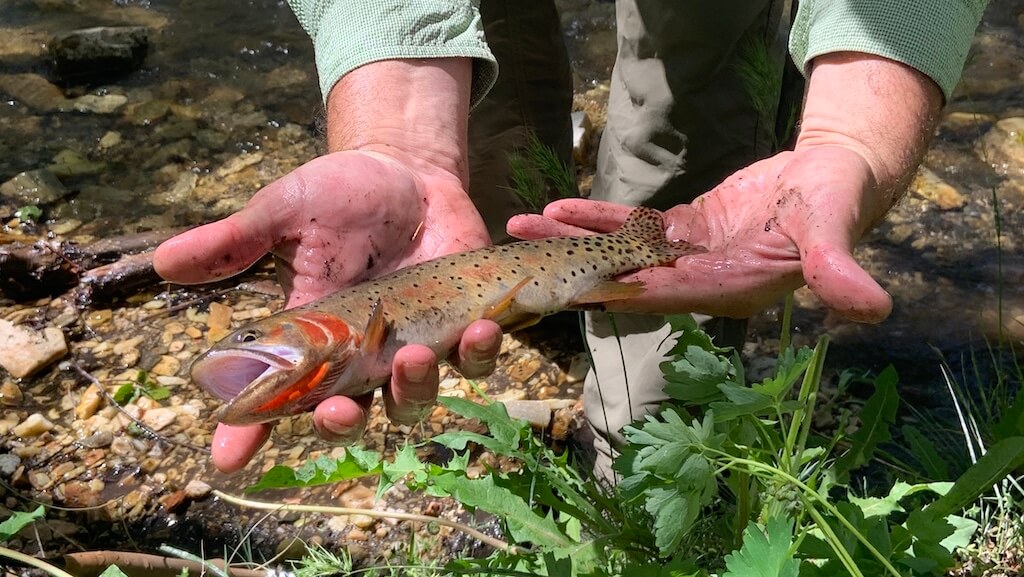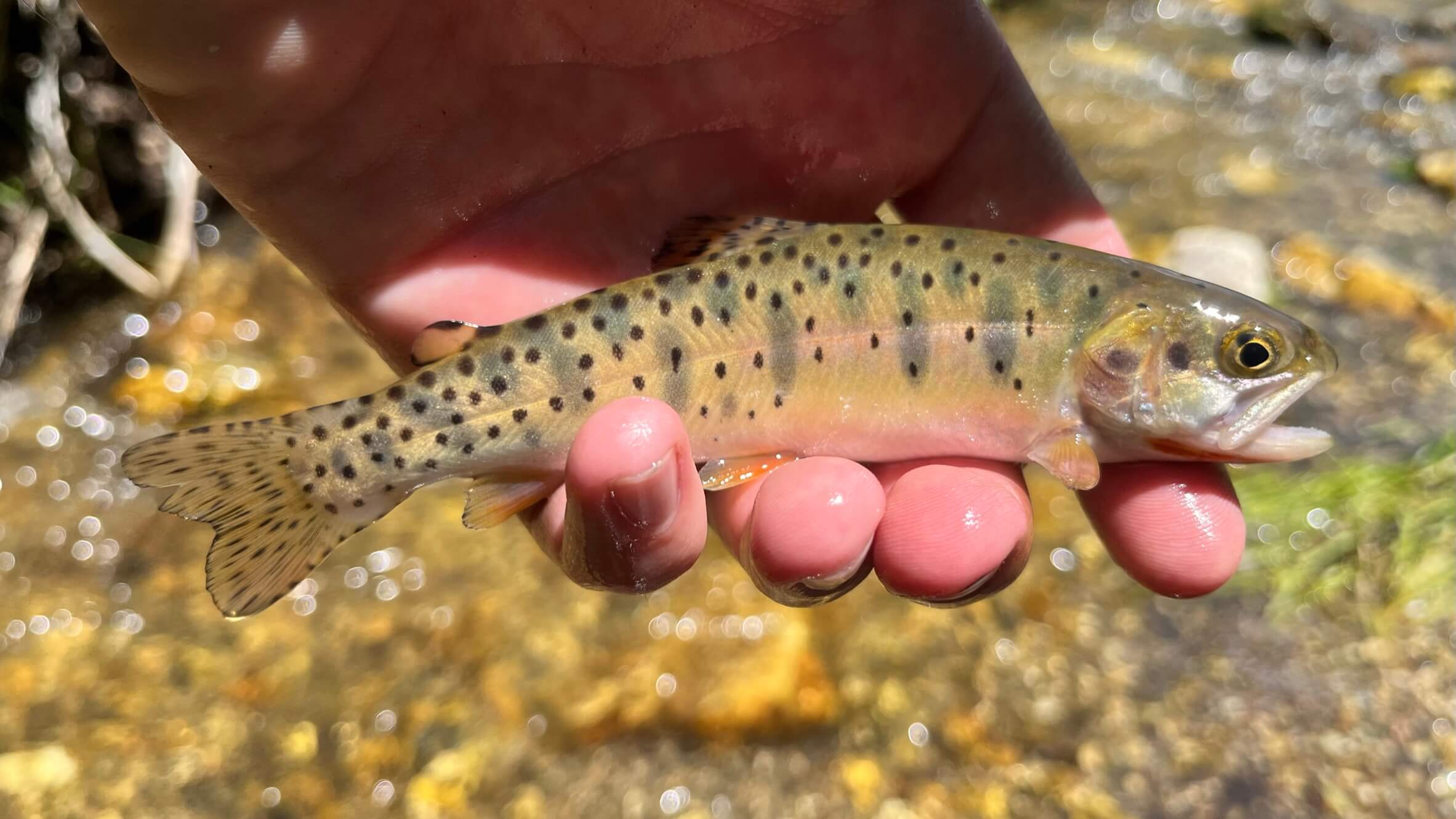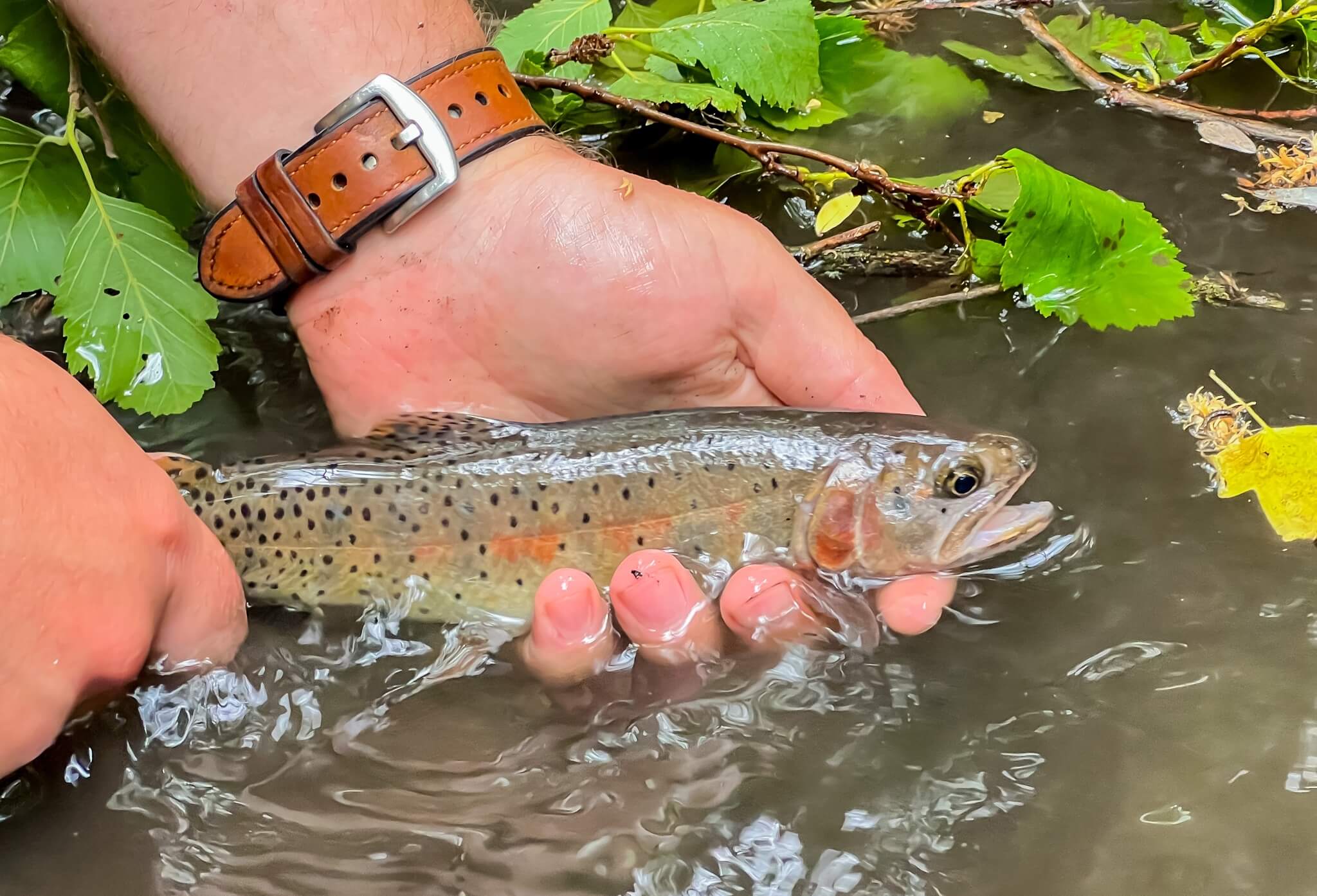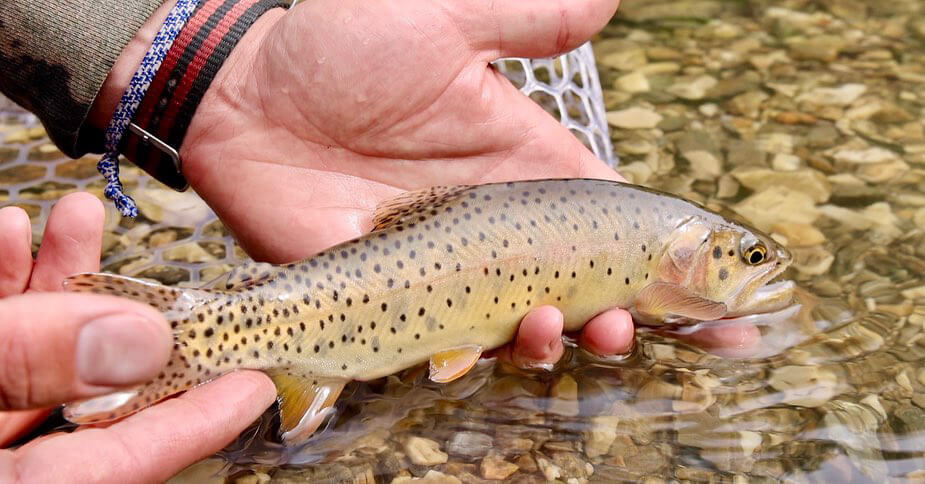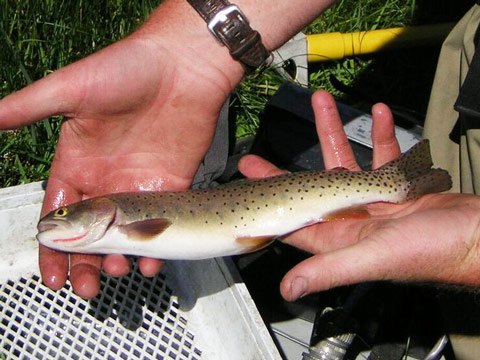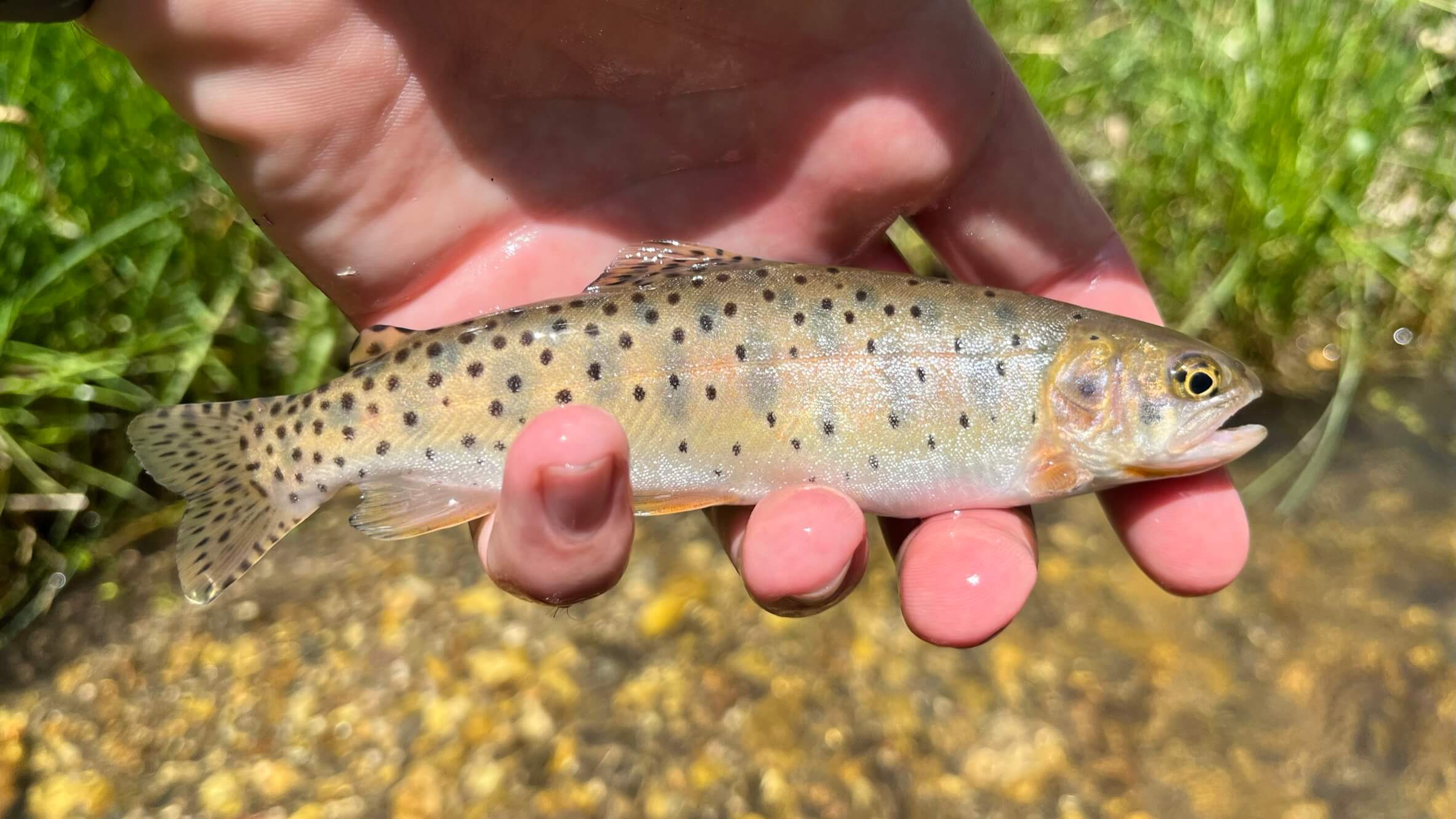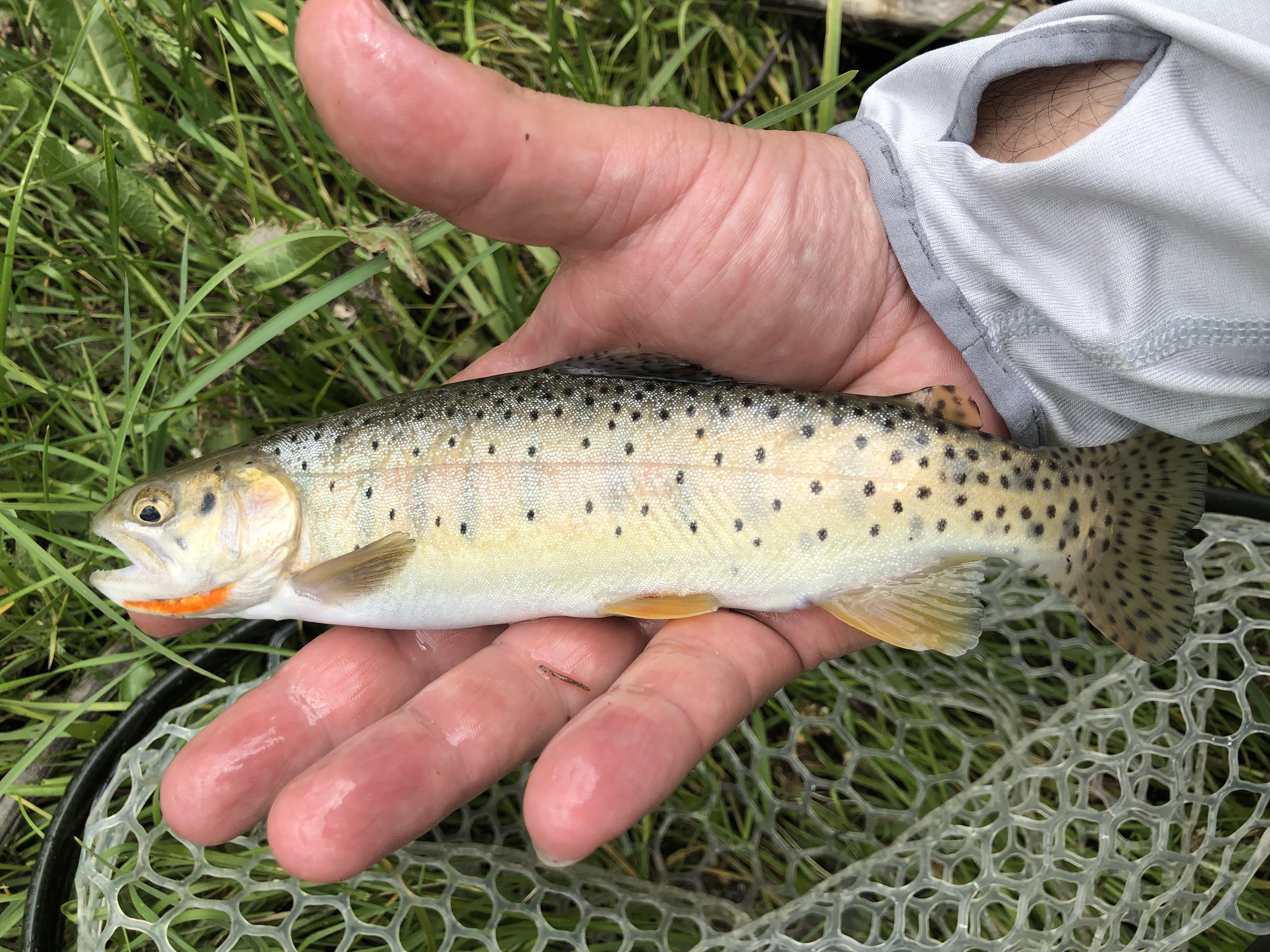Yellowstone
An Iconic Fish – Yellowstone Cutthroat Trout
Oncorhynchus virginalis bouvieri
One of the most iconic of the Slam’s subspecies, the Yellowstone cutthroat trout, has a very limited native range in Utah’s northwest corner. Outside of that native range however, many Utah anglers have caught Yellowstone cutthroat throughout the state. Records show the first cutthroat stocked from Yellowstone came to Utah in 1903 and were planted by Division of Wildlife Resources fisheries officials in a variety of lakes and streams across the state. In fact, the state record cutthroat trout caught in 1930 at Strawberry Reservoir – all 26 pounds 12 ounces of it – was either a Yellowstone cutthroat or a mix between a Yellowstone and a Colorado River cutthroat. Strawberry Reservoir, of course, is still known for its large cutthroat trout, but the fish there today are still not native to that watershed.
All that being said, the Yellowstone cutthroat trout may be the most challenging of the four Utah subspecies to land simply because of the remote nature of its native range and the small size or shrubby nature of the creeks in which they dwell. Remember, for a cutthroat to count towards the slam, it must be caught in its native range.
Yellowstone cutthroat once occurred in the Goose Creek and Raft River drainages in northwestern Utah near the Idaho and Nevada borders. But now the native fish are confined to the Raft River drainage alone. Check the Slam’s map and the recommended angling locations below for help in planning your trip!
Where to Find Yellowstone Cutthroat in Utah
To zoom in, open dialogue and click on “Yellowstone Cutthroat Trout”
Yellowstone cutthroat trout (YCT) are native to the Snake River Drainage and in Utah their distribution is limited to the northwest corner of the state. Historically, YCT occurred in Goose Creek and the Raft River drainages in Utah, but presently populations only occur in the Raft River drainage. The Utah Division of Wildlife Resources (UDWR) is working on establishing more populations of YCT that are accessible to anglers in the Raft River drainage. Any cutthroat trout caught in the Utah portion of the Raft River Drainage will be accepted for the Utah Native Cutthroat Slam.
Runoff in the Raft River Mountains typically gets started in April, ramps up in May, and concludes by mid-June. Although there may be limited opportunities for success during the runoff period, the best angling is available during the summer months after spring flows have subsided. The following streams/tributaries should provide the greatest chances of success in the summer and early fall:
Johnson Creek, USFS boundary upstream:
On the road heading west and south from Yost turn left at the ‘Y’ (41.956837, -113.549697), you’ll be on Forest Road (FR) 002 (rough and rocky in places, high clearance vehicle, 4wd recommended). USFS boundary is at (41.927359, -113.560495); fish upstream from here. Brook trout were chemically removed from the lower stretches of this stream in 2013-2014. The genetically pure population of YCT located in the headwaters (Left Hand Fork Johnson Creek and Browns Canyon) have dispersed downstream and are now readily catchable along the length of the creek starting at the Sawtooth National Forest sign. Conditions may be brushy, but to the dedicated angler, plenty of fish are to be found. Johnson Creek currently holds the densest population of YCT in the Raft River Mtns.
Onemile Creek/Sawmill Canyon:
From Onemile Road (FR 005) (41.971440, -113.427820), hike and fish a short piece of Onemile Creek into Sawmill Canyon; or from FR 005 turn onto FR 005A, travel half a mile (41.961575, -113.438163), then hike a short distance down the hill east to Sawmill Canyon. Yellowstone cutthroat trout are the only species of trout in Onemile Creek and its tributary, Sawmill Canyon. Yellowstone cutthroat occur in both of these streams on the Sawtooth National Forest, but angling conditions can be tough as these are small, brushy streams. The best angling opportunity in the Onemile Creek drainage is up Sawmill Canyon, so be careful of which creek you fish past the confluence of Onemile Creek and the Sawmill Canyon tributary. If you stay on Onemile Creek past the confluence, you might not see any fish!
George Creek, headwaters below Cabin Spring:
Take FR 005 to the top of the divide between George Creek and Onemile Creek, turn south on FR 011 (41.935677, -113.477707) (rough and rocky, high clearance vehicle, 4wd recommended), wind your way around and across the top of the mountain for 5 miles, park at the split in the road (there might be a Forest Service “Authorized Use Only” sign); hike 1 mile downstream (west) and fish below Cabin Spring (41.912887, -113.430001), the main tributary entering from the north/northwest; there is a piece of private land a short distance downstream of Cabin Spring that may be posted “No Trespassing” — if so, you may have to hike to the west and north of the creek around the private property to get back to USFS property downstream
These are small streams with small populations of cutthroat trout. Casting will be difficult or impossible in many places, and you may have to cover a lot of stream in order to find success. However, it is possible to catch fish in all of these drainages. For more information, please call the Northern Region Office at 801-476-2740.
Additional Map Options
The Avenza Maps mobile app allows you to track your location while navigating a map of the area.
Instructions for using Avenza Maps for locating Yellowstone Cutthroats:
- Download the application from: https://www.avenzamaps.com (home page) or Avenza Maps app is free and can be downloaded from the App Store, Google Play, or the Windows Store
- In order for you track your location within the georeferenced PDF map, please ensure that your devices GPS has been enabled
- For an iPhone, navigate to Settings >> Privacy >> Location Services >> On
- For an Android, navigate to Settings >> Location >> On
- Download map to your device
- Tap PDF attachment to download it. After downloading, hit the Action button ( ) and choose Import with Avenza Maps
- Within Avenza Maps, navigate to the Imported section to locate the newly imported PDF map
For help visit: https://www.avenzamaps.com/maps/how-it-works.html
Yellowstone Cutthroat Facts
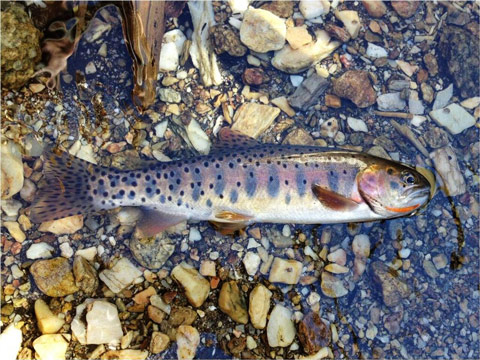
The only native range for YCT in Utah is in the extreme northwest corner of the state, in the Raft River Mountains
Due to its abundance in Yellowstone National Park, it's probably the most photographed and famous of cutthroat trout varieties
Once stocked in waters across Utah, and the state record cutthroat from Strawberry Reservoir was likely a Yellowstone
Fishing for these small trout may push an angler's skills to the limit, prepare to fish unconventionally to get the fly where you want it: bow and arrow casting, dapping the fly, etc.
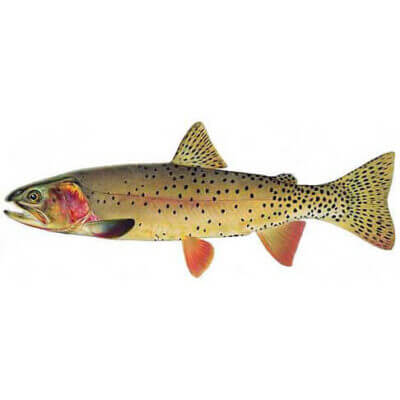
Photo by Joseph Tomelleri
Ready to Get Started?
The Utah Cutthroat Slam is a challenge and an adventure. Visit incredible waters to see what trout fishing in Utah was like way back then. Help Trout Unlimited and the Utah Division of Wildlife Resources restore and protect Utah’s incredible trout legacy and have fun along the way.
